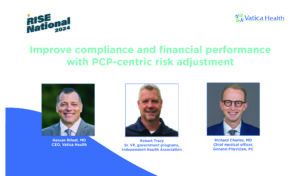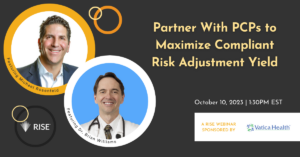Given the number of people who experienced income and job loss during the COVID-19 pandemic, it’s not surprising that Medicaid enrollment increased by 7.7 million or nearly 11% between February and November 2020, according to recent data from the Kaiser Family Foundation. However, what may come as a surprise—at least for some Medicaid plans—is the effect of this growing population on their revenue. Spoiler alert: It isn’t good news.
The challenge: Medicaid risk adjustment is a moving target.
Most health plans acknowledge the value of risk adjustment for the Medicaid population. However, implementing a successful program is a difficult process. Why? Medicaid risk adjustment programs are complex and vary by state. For example, while most states use the Chronic Illness and Disability Payment System (CDPS), there are several others including DxCG, CRG and more. Furthermore, states’ risk adjustment regulations, incentives, and penalties all tend to vary widely. This variability poses challenges and increased costs particularly for multi-state health plans when trying to devise and implement a comprehensive risk adjustment strategy.
Other challenges include the frequency with which Medicaid eligibility changes, volatility among sub-populations, as well as the difficulty associated with obtaining encounter data from an often-transient population. Despite these obstacles, risk adjustment is incredibly important because Medicaid managed care is often high-risk with low margins and reimbursement for care of this population depends on the specificity and accuracy of encounter data.
The complication: A growing Medicaid population could dilute risk.
Here’s where it gets even more complicated. Most states aggregate risk scores and then compare the performance of health plans in a region to each other. Failure to ensure Medicaid members receive appropriate care, including comprehensive annual exams by a primary care physician, can lead to severely diluted risk scores. New Medicaid beneficiaries are most likely to be individuals for whom health plans have no prior encounter data. This means there is no baseline for understanding how much it will cost to care for these members. Imagine an individual with multiple complications due to uncontrolled diabetes. If the health plan does not receive this data from care providers, it can’t accurately report this information to the state, which can result in sub-optimal funding to provide the care necessary for that beneficiary.
The same is true for members with previously diagnosed chronic conditions. Recapture of these conditions is critical to developing accurate population risk scores. If the diagnosis was reported in the prior year, but not the next, they will be omitted from the risk score calculation. Lastly, failure to accurately capture social determinants of health leads to systemic under-compensation, which disproportionately affects physicians and health plans serving these patients. This was true before COVID-19, but it is even more critical now as the number of Medicaid beneficiaries has risen and continues to grow.
Ultimately, Medicaid plans must ensure their encounter data accurately reflects severity of illness and risk of mortality, of their covered population. Otherwise, they could find themselves spending far more than they actually receive in payments.
The solution: A PCP-centric, health-plan sponsored program.
The sooner Medicaid plans can accurately capture all chronic conditions and social determinants of health, the better. The most effective and streamlined way to do this is by leveraging primary care physicians (PCP) who have the ability to quickly establish long-lasting relationships with these patients. PCPs are the providers with whom patients develop trust and, therefore, are likely to see most frequently. Through frequent interactions and encounters with their PCPs, it is possible to address health problems in real-time and document social determinants which may be impacting their health and quality of life.
When health plans sponsor PCP-centric risk adjustment programs, they are creating a win-win dynamic – ensuring that their members will receive high quality care in the most appropriate setting, and making sure they receive the correct amount to manage the patient. Unlike other programs that work around physicians and cause abrasion, PCP-centric programs support physicians and their staff with the clinical support and technology to efficiently document all chronic conditions and code to the highest degree of specificity. In addition, PCP-centric, health-plan sponsored programs often include services to assist with member engagement, appointment scheduling and confirmation, patient education on the use of telehealth, and more. These wrap-around services are particularly helpful with transient populations for whom outreach requires more persistence. The more touch points patients have with their provider, the more likely that provider can capture data that leads to accurate risk adjustment and appropriate reimbursement. The best part? There’s no additional burden placed on physicians and staff. For the health plan, the benefits of these programs include higher quality data capture, improved outcomes, and lower costs due to greater patient engagement. Additionally, an enhanced bond between a PCP and his or her patients helps reduce the likelihood that a patient will switch health plans.












